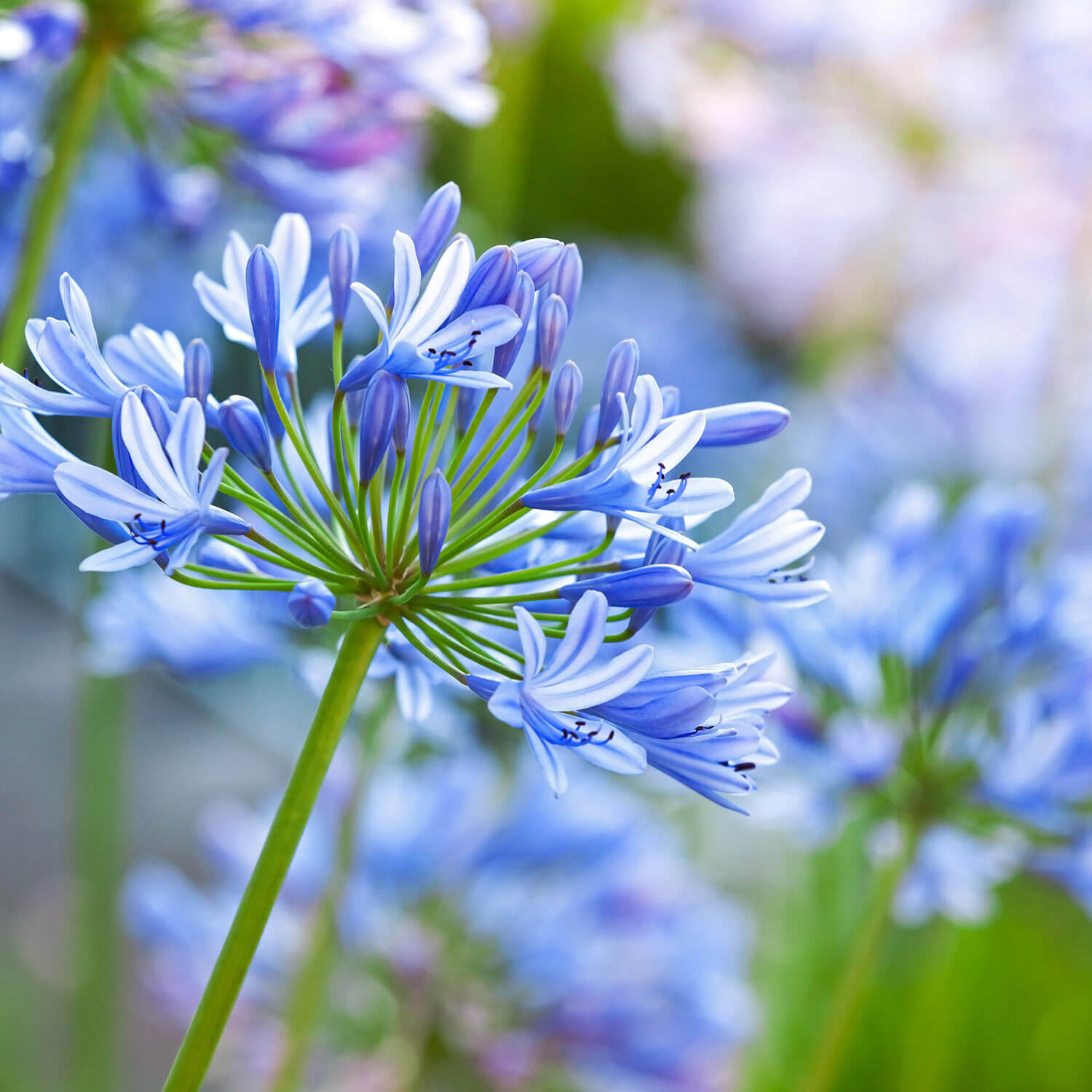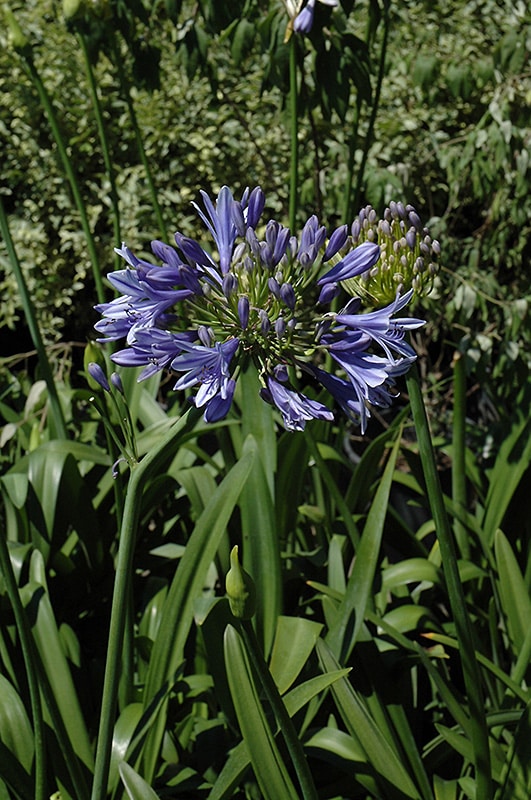Common Agapanthus Issues and Exactly How to Fix Them
Common Agapanthus Issues and Exactly How to Fix Them
Blog Article
Grasping the Art of Agapanthus Treatment: Crucial Steps for Healthy And Balanced Development and Lively Blooms
In the world of gardening, the cultivation of agapanthus stands as a fulfilling venture for those that seek to support these stylish flowering plants. From picking the best selection to understanding trimming strategies, the trip towards cultivating prospering agapanthus plants is complex and holds the crucial to opening the full capacity of these herb gems.

Picking the Right Agapanthus Variety

When picking the best Agapanthus range for your yard, think about aspects such as climate viability, bloom shade, and growth behavior. Agapanthus, typically referred to as Lily of the Nile or African lily, comes in a selection of shades varying from shades of purple and blue to white. Pick a flower color that complements your existing garden palette to develop an unified landscape. Additionally, consider the environment in your area to make sure the Agapanthus variety you choose can thrive in your certain problems. Some varieties are a lot more tolerant of cold temperature levels, while others choose warmer climates. Recognizing the growth routine of various Agapanthus selections is vital for correct placement within your garden. Some selections have a clumping growth routine, suitable for containers or boundaries, while others have an even more dispersing nature, appropriate for ground cover or mass growings. By very carefully assessing these elements, you can choose the perfect Agapanthus selection to enhance the beauty of your garden.
Ideal Growing Problems
Taking into consideration the ideal environmental demands is important for successful Agapanthus cultivation. Agapanthus plants are delicate to cool temperature levels and ought to be secured from frost during winter season months.
To guarantee healthy growth and vivid blossoms, plant Agapanthus bulbs at a depth of about 2-4 inches and space them 8-12 inches apart. Mulching around the base of the plants assists maintain wetness and suppresses weed growth.
Watering and Fertilizing Tips
Keeping appropriate wetness levels and supplying crucial nutrients are crucial components in the care program for Agapanthus plants. When it comes to watering Agapanthus, it is important to strike an equilibrium. These plants favor constantly wet soil yet are at risk to root rot if overwatered.
Feeding Agapanthus is necessary for promoting healthy development and prolific blooms. Use a balanced fertilizer, such as a 10-10-10 formula, in the very early springtime as new growth emerges. Repeat this application every 6-8 weeks throughout the expanding period. Avoid excessive fertilization, as it can bring about lavish vegetation at the expenditure of flowers. Always follow the producer's directions for correct dilution and application methods. By adhering to these watering and feeding suggestions, you can ensure your Agapanthus plants flourish and generate vibrant, long-lasting blossoms.
Trimming Strategies for Agapanthus
Trimming Agapanthus plants at the appropriate times and with correct methods is crucial for keeping their health and promoting ideal development and flowering. The suitable time to prune Agapanthus is in late wintertime or very early spring before address new growth arises.
Deadheading invested flowers can likewise reroute the plant's energy right into creating even more blooms instead than setting seeds. If you desire to accumulate seeds for propagation, leave some flowers to completely dry and mature on the plant.
Bear in mind to use clean, sharp tools to make precise cuts and minimize the danger of presenting illness. Agapanthus. Regular trimming will certainly aid keep your Agapanthus looking healthy and balanced and cool while guaranteeing a bountiful display screen of attractive flowers
Managing Typical Insects and Conditions
After making certain correct pruning strategies for Agapanthus, it is vital to resolve typical bugs and conditions that can affect the wellness and vigor of these plants. Agapanthus plants are typically hardy yet can still succumb to specific concerns. One typical parasite that impacts Agapanthus is the Agapanthus gall midget. This tiny, orange fly lays its eggs in the foliage, causing distorted development and blossom buds that fail to open. To fight this bug, trim and ruin any kind of damaged plant parts and think about utilizing insecticidal soap.
An additional typical issue is fungal fallen leave place, which offers as dark lesions on the leaves. To avoid fungal diseases, guarantee good air flow around the plants, avoid overhanging watering, and remove any kind of contaminated fallen leaves immediately. In addition, Agapanthus plants can experience root rot if they are planted in poorly draining pipes soil. To stop my latest blog post this, plant Agapanthus in well-draining soil and avoid overwatering. By being alert and taking punctual activity versus conditions and insects, you can help your Agapanthus plants grow and create vivid flowers.

Final Thought
Finally, grasping the art of agapanthus care entails selecting the best selection, supplying optimal planting problems, correct watering and feeding, proper trimming techniques, and resolving common bugs and conditions. By complying with these essential steps, you can ensure healthy development and dynamic flowers for your agapanthus plants. the original source Bear in mind to on a regular basis check and keep your plants to promote their overall health and longevity.
To ensure healthy and balanced development and lively blooms, plant Agapanthus light bulbs at a depth of about 2-4 inches and area them 8-12 inches apart. By following these watering and feeding tips, you can guarantee your Agapanthus plants thrive and create vivid, durable flowers.
One common parasite that influences Agapanthus is the Agapanthus gall midget. In addition, Agapanthus plants can endure from root rot if they are planted in badly draining soil. By following these essential actions, you can make certain healthy growth and vivid blossoms for your agapanthus plants.
Report this page